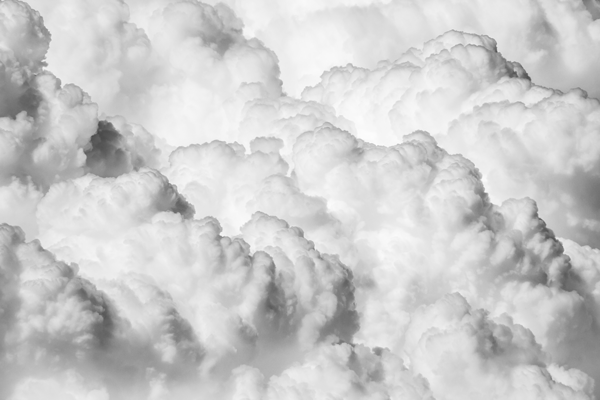Welcome to the GEOS 170, Environment II: Weather, webpage for the Spring 2018 semester.

Photo of moist convection and entrainment by Joshua Reddekopp
Spring 2018 Lectures: MWF, 12:00 - 12:50 PM. Location: Plumas 106
Click here for a PDF of the Syllabus.
Required book: Meteorology Today 11th edition by C. Donald Ahrens and Robert Henson.
This page will be updated every few days as the course progresses.
Mon., 22 Jan., Review syllabus and discussion of today's weather.
Weds., 24 Jan., Begin Chapter 1. Weather versus climate, and extreme weather events of 2017.
Fri., 26 Jan., Lecture on composition of the atmosphere and basic vertical structure of the atmosphere.
Mon., 29 Jan., Lecture on weather technologies: Weather stations, radiosondes, radar, satellites, aircraft, etc.
Wed., 31 Jan., Begin Chapter 2: Forms of energy, First Law of Thermo, temperature, phases or states of matter.
Fri., 2 Feb., Continue Chapter 2: Heat transfer: conduction and convection.
Mon., 5 Feb., Homework #1 (from Chapter 2) Due. Radiant energy, Stefan-Boltzmann and Wein's laws, greenhouse gases and selective absorbers.
Weds., 7 Feb., Quiz #1 on Chapter 2. Scattering, solar radiation.
Fri., 9 Feb., Complete Chapter 2: Albedo, Greenhouse effect. Begin Chapter 3: Seasons.
Mon., 12 Feb., Complete Chapter 3: Air temperature near the ground and diurnal cycles. Ideal gas law and density.
Weds., 14 Feb., Homework #2 (from Chapter 3) Due. Begin Chapter 4: Atmospheric Humidity: saturation vapor pressure.
Fri., 16 Feb., Complete Chapter 4: vapor pressure, relative humidity, absolute and specific humidity, mixing ratio, dew-point.
Mon., 19 Feb., Homework #3 (from Chapter 4) Due. Quiz #2. Discussion on TurnItIn similarity score and plagiarism on homework. Then, info on exam #1 and review quiz #2.
Weds., 21 Feb., Exam #1: Chapters 1-4.
Fri., 23 Feb., Begin Chapter 5: Condensation (and deposition): dew, frost, and fog. Today: radiation fog and advection fog.
Mon., 26 Feb., Complete fogs: upslope fog and mixing fog. Begin types of clouds.
Weds., 28 Feb., Homework #4 (from Chapter 5) Due. Conclude Chapter 5 and begin Chapter 6 on stability and cloud formation.
Fri., 2 Mar., Quiz #3 on Chapter 5. Lecture on lapse rate; environmental versus process lapse rates; dry adiabatic versus moist adiabatic lapse rates.
Mon., 5 Mar., Continue Chapter 6: Conditional instability; convection.
Weds., 7 Mar., Special assignment #3 due. Entrainment, wind shear, shallow convection, cloud streets, orographic uplift, mountain wave clouds, instability billows.
Fri., 9 Mar., Conclude Chapter 6: thermodynamic diagrams. Begin Chapter 7: Precipitation. distribution of rainfall, rain gages, curvature and solute effects.
Mon., 12 Mar., Lecture on limitation of droplet growth by condensation and molecular diffusion, collision and coalescence, and then the Bergeron (ice-crystal) process.
Weds., 14 Mar., Review collision and coalescence and the Bergeron (ice-crystal) process. Cloud seeding, human influences on clouds, types of precipitation.
Fri., 16 Mar., Completed Chapter 7 (discussion of hail) and began Chapter 8: Air Pressure and Winds
Mon., 19 Mar., Spring Break
Weds., 21 Mar., Spring Break
Fri., 23 Mar., Spring Break
Mon., 26 Mar., Direct thermal circulation, correction for station altitude, isobars and surface weather maps, constant pressure surfaces, upper air charts, and isoheights.
Weds., 28 Mar., Pressure gradients, hydrostatic balance, Coriolis force, geostrophic balance.
Fri., 30 Mar., Cesar Chavez Day. No classes.
Mon., 2 Apr., Scalar versus vector, components of a vector, balance of forces for geostrophic wind, wind in friction layer and resulting convergence and divergence and vertical motion.
Weds., 4 Apr., Review for Exam #2.
Fri., 6 Apr., Exam #2 on Chapter 5-8.
Mon., 9 Apr., Begin Chapter 9: Small-scale and local systems. Scales of motion, eddies, turbulence, friction. Planetary boundary layer.
Weds., 11 Apr., Molecular versus eddy viscosity. Convective versus stable boundary layers. Billows. Power of the wind, Aeolian processes.
Fri., 13 Apr., Review grades. Continue Chapter 9: Flow over large lakes; sea-breeze and land-breeze; valley and mountain breezes.
Mon., 16 Apr., Quiz on Chapter 9. Then, discussion of isobar contour assignment and wind symbols on weather maps.
Weds., 18 Apr., Anabatic and Katabatic winds, The Great Dust Bowl, gust fronts, haboobs, and dust devils.
Fri., 20 Apr., Homework from Chapter 10 due. Lecture: Wind measurement techniques, then Begin Chapter 10: three cell model; semi-permanent highs and lows.
Mon., 23 Apr., Homework from Chapter 11 due. Lecture: Jet streams (pages 274-278) and begin Atmosphere-Ocean Interactions (see page 278)
Weds., 25 Apr., Quiz on Chapter 10. Review Ekman spiral and transport. Then Begin Chapter 11: Air masses and Fronts.
Fri., 27 Apr., Conclude Fronts: dry lines, gust fronts. Then begin Chapter 12: Middle Latitude Cyclones: Bjerknes polar front model
Mon., 30 Apr., Rossby waves, zonal and meridonal flow, short waves, cold and warm advection, begin vorticity.
Weds., 2 May, Conclude Chapter 12: jet streaks, vorticity, divergence.
Fri., 4 May, Exam #3: Chapters 9-12.
Dr. Mayor's page
